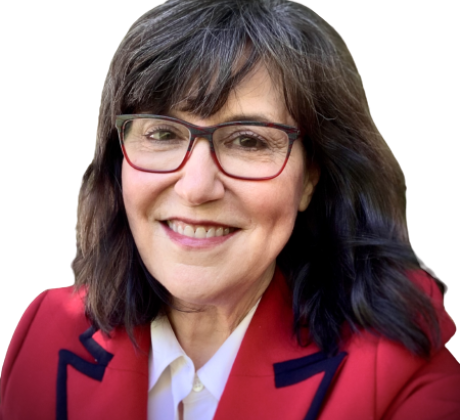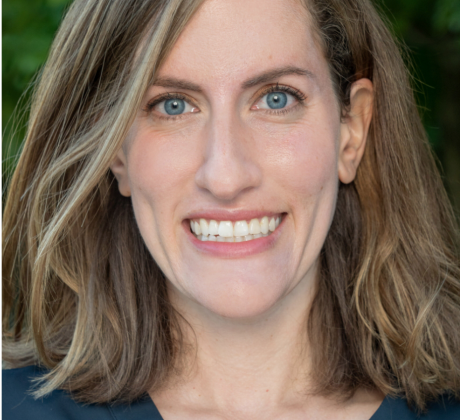Stephanie Ostroff is a speech-language pathologist and journalist. She enjoys blending knowledge from both fields to shine a light on innovators and changemakers in health care.


Leveraging behavioral science, Cindy Firkins Smith, MD, MHCI ’20, lays the groundwork for better health care in rural Minnesota
Cindy Firkins Smith was considering pulling back.
At 64 years old, she’d led a long, successful career as a Minnesota health care leader and dermatologist. She had just finished building a rural health division at CentraCare, working to integrate eight critical care hospitals during a pandemic. Smith wondered if it might be time to dial down at work and lean into her role as a grandmother.
Then, a new project landed on her desk.
Plans for a rural medical school in a joint venture between CentraCare and the University of Minnesota–the first new campus to open in the state in over 50 years. A training ground aimed at tackling the growing rural physician shortage by drawing medical students directly from the communities they might serve.
Smith couldn’t look the other way.
“We’re in a crisis.” she says. “The median age of rural physicians is 58. Recent Minnesota Department of Health studies show 1 in 3 rural physicians plans to retire or cut back within the next 5 years. Rural students are applying to medical school in fewer numbers.”
So instead of stepping away, Smith is stepping up to a new challenge. It’s not an unprecedented move for her. In 2018, approaching 60, Smith went back to school to earn the University of Pennsylvania’s Master of Health Care Innovation (MHCI). Now she’s energized to continue applying what she learned about behavioral economics in the program while developing a rural health campus from scratch.
“My job is to build. I’m a change adapter. I build people, relationships, structure,” she says. “And then it’s time for me to build something new.”
Motivating Physicians to Embrace a New Venture
Smith will lead CentraCare in its partnership with the University of Minnesota, moving forward plans for a medical school in a repurposed administrative building in St. Cloud. By 2025, they hope to welcome their first incoming class. Students will have access to new residency slots in specialties facing significant rural shortages, like pediatrics, general surgery, and obstetrics/gynecology.
Smith is particularly interested in expanding medical education opportunities for rural Minnesota’s diverse immigrant population, “since health outcomes are best when the care is delivered by someone who looks like you.” She says the campus will be “committed to identifying rural students, educating them, supporting them, raising them up and bringing them home. That’s the goal.”
My job is to build. I’m a change adapter. I build people, relationships, structure. And then it’s time for me to build something new.
To make it all happen, Smith needs to recruit physician educators who believe in her mission–and she has to anticipate what might stand in the way of their engagement. That’s where her understanding of behavioral science comes into play. While excitement about the new medical campus is palpable, she says physicians are concerned about loss.
“We have a lot of physicians that have deep intrinsic motivation to educate and be part of this mission,” Smith says. “But the system around them creates disincentives to that intrinsic motivation. The MHCI has helped me identify these things.”
Training medical students can cut into productivity, leading to reduced compensation on a traditional Relative Value Units (RVU) income formula. Smith aims to help redesign the reimbursement system to better support physician educators, aligning it with priorities like teamwork, research, and value-based care. As she influences creation of the new payment model, she’s leveraging principles from the Behavioral Economics and Decision Making course she took at Penn, taught by Kevin Volpp, MD, PhD.
“The MHCI is helping me build incentive structures that hopefully incentivize the right behavior, but even more importantly don't disincentivize the right behavior,” Smith says. “We're creating an academic health center, and we really want docs to embrace the teaching mission and the research mission. Does our current RVU-based system disincentivize that, and how can we change that?”
A Collective Mission to Improve Care
This isn’t the first time Smith has leveraged behavioral science to rally physicians around a new initiative. Just after graduating with her MHCI in 2020, she was tasked with creating a Rural Health Division at CentraCare in a new role as Senior Vice President. Bringing together eight distinct hospitals required a shift in thinking.
“Three of these hospitals had been in competition for as long as they’d been in existence,” says Smith. “It’s like Friday night football. They’re always trying to win. Forever there was this one-upmanship, and everybody had to have everything.”
The MHCI is helping me build incentive structures that hopefully incentivize the right behavior, but even more importantly don't disincentivize the right behavior.
That was before Smith and her team restructured incentives, drawing from principles of behavioral economics. What if the hospitals shared resources, supporting one another in a common goal of providing high quality care to rural patients? And what if their performance was evaluated together, rather than compared side-by-side?
“By creating shared services–by creating this team–there are less fires,” Smith says. “We have created a support system that didn’t previously exist.”
That means shared emergency room coverage, lab, and imaging resources–a win for patients and health care providers. Soon, work to create collaborative obstetrics care delivery will unify obstetrics and gynecology services, better meeting the needs of rural Minnesotans.
“If we create a center of excellence that utilizes our ability to access maternal fetal medicine and have state-of-the-art care in a rural site, we believe that will actually increase our business,” Smith says. “But again, you had to be able to think differently about how these individual critical access hospitals were functioning.”
Smith has observed the trickle-down effect of her behavioral economics knowledge. Over the last few years, her team has integrated vocabulary like “intrinsic biases” and “motivation” into its dialogue. Her hope is to spread the gospel to the next generation of rural health care leaders–medical students at the future campus in St. Cloud. She envisions them conducting research on choice architecture and incentives to optimize outcomes with rural patients.
“I want to make sure students are aware of biases and incentives,” she says. “Because people don't think about them, but they affect every single decision that we make.”

